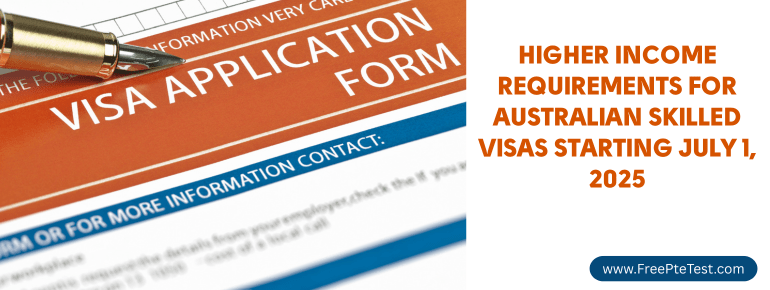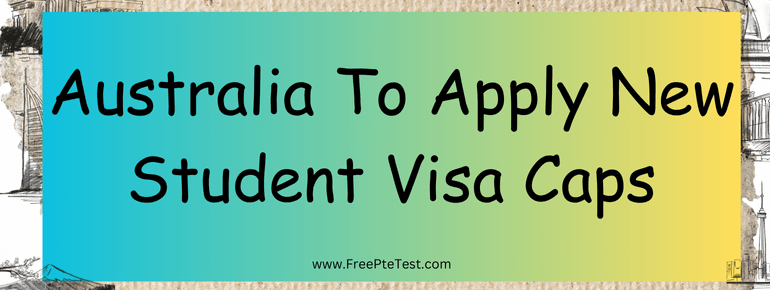The federal government has finally disclosed the limit for international student in Australia, following months of speculation.
In 2025, the threshold for international students enrolling in a course will be 270,000. This threshold encompasses both vocational and higher education courses.
This still requires parliamentary authorization. For the government to establish enforceable enrollment limits, legislation must be passed by the Senate.
The government has exceeded its legal authority in this matter, as the recruitment and enrollment of international students for the upcoming year are already well underway. Education providers must determine the maximum number of pupils they can accommodate.
The cumulative consequences are difficult to predict, as the limits are being implemented in addition to significant changes to visa and migration regulations for international students, which have occurred nine times in the past year.
Although some universities will be compelled to reject students who would have otherwise enrolled due to limits, other universities may need help to utilize their international student quota fully.
The government asserts that the overall limit, referred to as a “national planning level,” will restore the number of new students to pre-pandemic levels. Nevertheless, not all student categories are subject to a limit.
As previously stated, the limit will not apply to school students, postgraduate research students, certain English language students, and students in “non-award courses” (a category that includes exchange students).
Additionally, we have implemented several new exemptions. These encompass students who are recipients of Australian government or “key partner” foreign government scholarships, students who are involved in “twinning” arrangements (where they complete a portion of their coursework overseas and subsequently return to Australia), and students from the Pacific and Timor-Leste.
The limit will apply exclusively to new international student commencements in 2025. A pupil will be regarded as “new” upon initial enrollment at each educational institution. They will not be considered new if they enroll in an additional course at the same provider. The government can limit the number of students in 2026 and subsequent years.
Regrettably, publicly accessible data does not permit precise comparisons between the 2025 limits and previous enrollments. The definition of a “new” student is distinct, and there is no published data on foreign scholarship holders or students who begin their studies at offshore campuses before arriving in Australia.
What is the significance of this for universities?
The government has announced that public universities will have a combined limit of approximately 145,000 new international students.
The limits have been determined using the 2019 pre-pandemic enrolments at each public university as their foundation. A formula applies to universities that increased their enrollment of international students between 2019 and 2023, contingent upon their “international concentration.” This is determined by the proportion of international students enrolled in Australian campuses.
For universities with minimal concentrations of international students, all growth to 2023 can be accounted for in the 2025 cap. Nevertheless, universities with concentrations exceeding 37% will only be able to retain 50% of their development.
This is expected to have the greatest impact on the universities with a higher reputation. This encompasses the Australian National University, the University of Melbourne, the University of Sydney, and the University of Queensland, all members of the Group of Eight. In 2025, they will be required to reduce their pupil intakes that commence in comparison to 2023 and 2024.
Approximately 30,000 new international students will be admitted to private universities and non-university higher education providers, primarily tiny specialist colleges.
What is the status of vocational education?
The vocational education sector, which encompasses TAFEs, will have a total limit of 95,000 new international students who will commence their studies.
The government has announced that vocational education providers with a “higher ratio of international students” will receive reduced allocations to motivate them to diversify.
This will substantially affect vocational colleges that predominantly cater to international students.
Will the limits be attained?
Some in the public university sector may perceive the government’s limits, which permit some growth since 2019 and a broader range of exemptions, as superior to their worst-case scenarios.
Nevertheless, the number of new international students in 2025 could be significantly lower than 270,000.
Modification of migration policy for International Student
As I have previously stated, the government implemented nine migration adjustments between late 2023 and July 1, 2024, which reduced Australia’s appeal to international students. A tenth change is anticipated to occur later this year, exacerbating the challenges of permanent migration for international students.
By June 2024, these changes had already significantly impacted the offshore demand for vocational education. In June 2024, the demand for higher education appeared consistent; however, this was before the non-refundable visa application fee, which had increased over twofold to A$1,600.
One of the nine adjustments, a ministerial direction on visa processing priorities, will be reversed if the government’s capping legislation passes the Senate. This is a positive development. This has resulted in a significant disadvantage for universities and other educational institutions that are less prestigious due to the delayed processing of visas.
Restricting student choice
Some education providers may experience an increase in enrollment due to more equitable visa processing. However, capping the number of popular universities below the level of student demand will not inherently benefit other universities in Australia.
Only a few students who aspire to attend high-profile universities or reside in urban areas will opt for regional or lower-profile institutions. They are simply unwilling to visit Australia.
The number of new pupils will be significantly lower than 270,000 by the end of 2025, as numerous universities and other educational institutions will not have reached their capacity.
The Senate will make the decision.
The Senate inquiry into the capping measure held two public hearings, which raised numerous concerns about the caps. These concerns included that the caps would result in employment losses at universities. The inquiry’s report will be published on September 6.
Regrettably, the Coalition endorses the concept of education-provider-level limits, which is detrimental to the international education sector. If the Coalition and Labour can agree on establishing provider limits, this legislation section will be passed in some form. Therefore, the ongoing discussion will pertain solely to the specifics of limits in 2025 and beyond.



